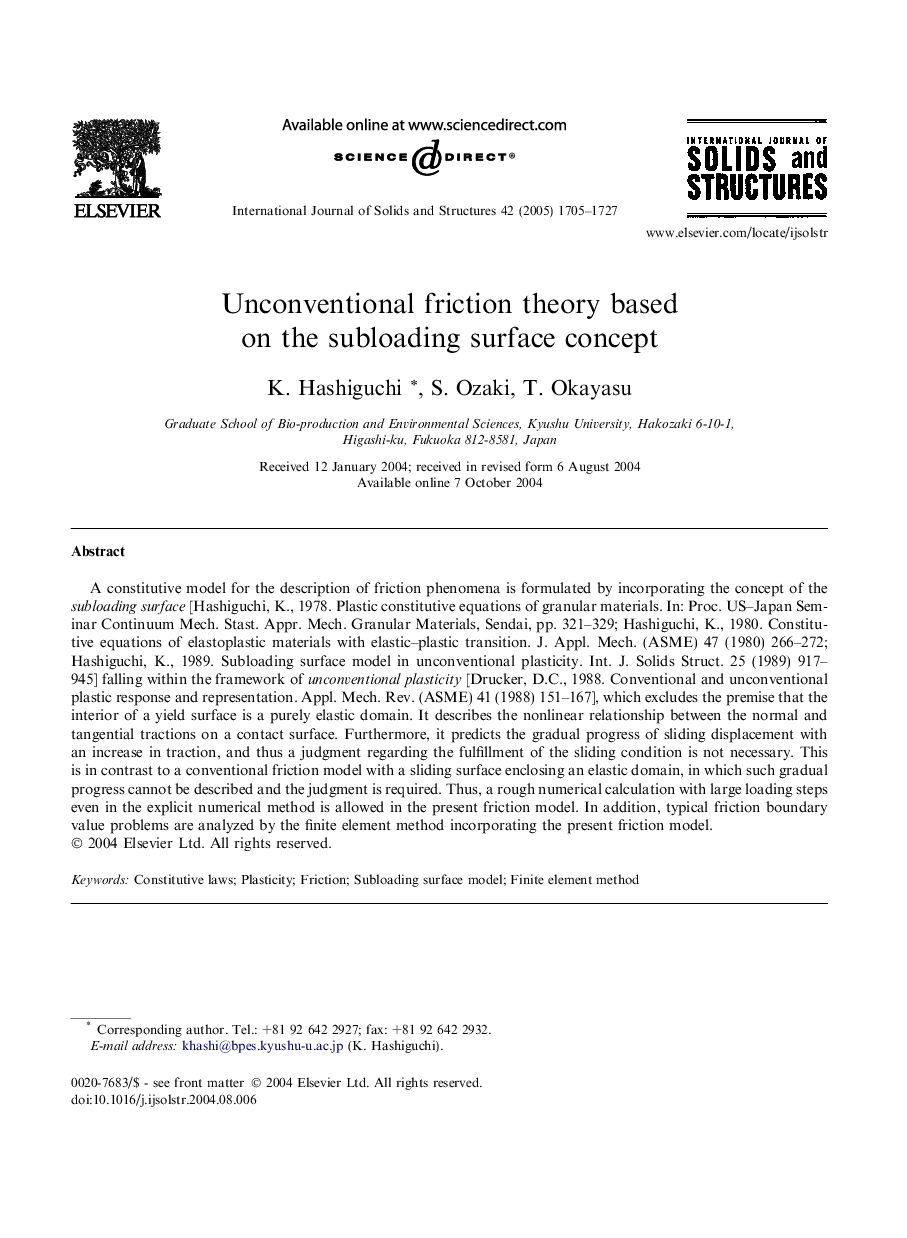| Article ID | Journal | Published Year | Pages | File Type |
|---|---|---|---|---|
| 9639720 | International Journal of Solids and Structures | 2005 | 23 Pages |
Abstract
A constitutive model for the description of friction phenomena is formulated by incorporating the concept of the subloading surface [Hashiguchi, K., 1978. Plastic constitutive equations of granular materials. In: Proc. US-Japan Seminar Continuum Mech. Stast. Appr. Mech. Granular Materials, Sendai, pp. 321-329; Hashiguchi, K., 1980. Constitutive equations of elastoplastic materials with elastic-plastic transition. J. Appl. Mech. (ASME) 47 (1980) 266-272; Hashiguchi, K., 1989. Subloading surface model in unconventional plasticity. Int. J. Solids Struct. 25 (1989) 917-945] falling within the framework of unconventional plasticity [Drucker, D.C., 1988. Conventional and unconventional plastic response and representation. Appl. Mech. Rev. (ASME) 41 (1988) 151-167], which excludes the premise that the interior of a yield surface is a purely elastic domain. It describes the nonlinear relationship between the normal and tangential tractions on a contact surface. Furthermore, it predicts the gradual progress of sliding displacement with an increase in traction, and thus a judgment regarding the fulfillment of the sliding condition is not necessary. This is in contrast to a conventional friction model with a sliding surface enclosing an elastic domain, in which such gradual progress cannot be described and the judgment is required. Thus, a rough numerical calculation with large loading steps even in the explicit numerical method is allowed in the present friction model. In addition, typical friction boundary value problems are analyzed by the finite element method incorporating the present friction model.
Related Topics
Physical Sciences and Engineering
Engineering
Civil and Structural Engineering
Authors
K. Hashiguchi, S. Ozaki, T. Okayasu,
